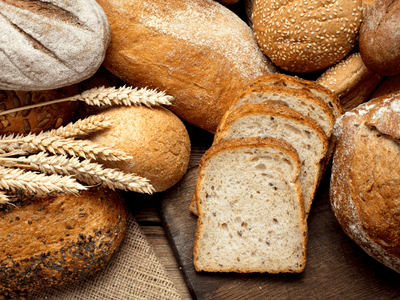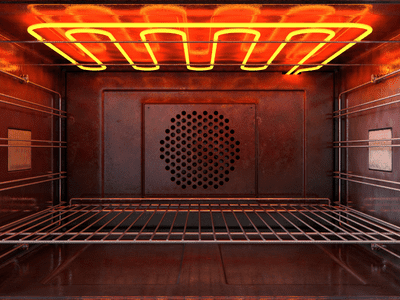Temperatures to bake bread: Why is bread oven temperature so important?
Once the bread has proofed, bakers can make the following changes:
- The duration of baking
- The temperature of the oven
- In the oven, the humidity/use of steam
These elements influence the bread’s characteristics. Bakers have fewer options when it comes to available ovens. However, the speed with which the oven can regain temperature after the door is opened is also a factor in bread quality. The harder and darker the crust will be, the more intense these factors are.
Temperatures to Bake Bread

The standard bake bread temperature for bread is between 220C (430F) and 230C. (450F). Whole wheat bread and loaves with seeds or toppings become less appealing when heavily colored and are best baked at 210-220 degrees Celsius (410-430F). White bread and sourdough are baked at 230°C (450F).
The baking temperatures for some of the most popular homemade breads are as follows:
What temperature should I bake soft rolls at?
Bake soft bread rolls for 10-12 minutes at 230-250C (450-480F). Place the rolls on a shelf near the top element of the oven. If your oven does not allow it, finish under the broiler for the last 2-3 minutes. The heat from above caramelizes the top surface of the rolls, resulting in a thick, colored crust and a soft, moist crumb.
What temperature should crusty rolls be baked at?
Bake crusty rolls for 20-24 minutes on a preheated baking stone at 220C (430F). Adding steam as you load the oven will result in extra crispy rolls when they come out.
What temperature should baguettes be baked at?
Preheat the oven to 250°C when baking baguettes (480F). This baking temperature enhances the flour’s characteristic buttery flavor while making the baguettes crunchy on the outside and soft in the center.
What is the best oven temperature for baking pizza?

Pizza is baked at 450-500 degrees Celsius (850-930 degrees Fahrenheit), sometimes higher. Most home ovens are incapable of reaching this temperature. In restaurants, a wood or gas-fired oven is used. The high temperature draws sweet aromas from the crust while softening the dough interior.
Pizza cooked at this temperature will be ready in less than a minute. To accelerate colorisation when making pizza dough at home in a cooler oven, add sweeteners (such as sugar or honey) and olive oil to the recipe.
What temperature should I bake ciabatta at?
Ciabatta is typically baked at 220°C (430°F) for 22-30 minutes; however, a hotter oven may be preferred on occasion. Midway through baking, the oven temperature is frequently reduced to remove excess moisture from the ciabatta crumb.
What temperature should I use to bake Italian bread?
Italian bread is frequently baked at temperatures as high as 300 degrees Celsius (570 degrees Fahrenheit)! The high baking temperature results in a soft crumb on the inside and a charred-yet-soft crust on the outside. The blackened crust perfumes the bread, resulting in a deliciously deep and aromatic flavor.
What temperature should the Pain de Mie be baked at?
Pain de Mie has more fat and sugar than regular white bread. A Pain de Mie is baked between 200 and 220C (390-430F) for 30 minutes, depending on the level of enrichment used. If the loaf browns too quickly, reduce the baking temperature.
What temperature should brioche be baked at?
Brioche contains a lot of fat and sweeteners, so it should be baked between 180 and 200 degrees Celsius (390F). Baking at this temperature keeps the bread moist. It also prevents excessive browning caused by caramelisation and Maillard reactions at higher temperatures.
What is the ideal baking temperature for sourdough?
Preheat the oven to 250 degrees Celsius (480 degrees Fahrenheit) with a baking stone inside. Reduce the temperature to 230°C once the bread has been added (450F). Set a timer for 25 minutes and add steam. After that, open the oven door to let the steam out and reduce the heat to 210°C (410F). Cook the bread until it sounds hollow when tapped. The total baking time is approximately 35-40 minutes.
The temperatures listed are only guidelines. They may differ from oven to oven because some are more powerful than others. Some will have their heating elements located at various distances from the baking bread. Begin with a bread recipe, then use these tips to make adjustments as needed.
How to Make Sure Your Oven Is at the Right Temperature

Oven temperatures are not always as precise as you think. Bakers are frequently surprised to discover that their ovens are operating 10-20 degrees above the temperature they have set. You should get an oven thermometer to ensure that you are baking at the correct temperature. These thermometers will be placed in your oven to give you an accurate temperature reading.
Baking stones take some time to heat up completely. When your oven’s heating light goes out, even if the temperature is high enough, the core of the stone will take longer to heat through. Depending on the thickness of the stone, this could take up to an hour. Not allowing the baking to properly preheat makes it less effective at conducting heat into the bread, lowering the oven spring. To ensure that the desired temperature of the stone has been reached, use an infrared thermometer.
Bottom Line
To put these tips into practice, begin by “fine-tuning” your bread temperature with the oven temperature dial. Follow a bread recipe, then experiment with oven settings. After experimenting with various temperatures, you’ll soon discover that your bread is just right! In the comments section below, please share what you’ve learned about bread baking temperature and how you plan to approach baking bread differently.